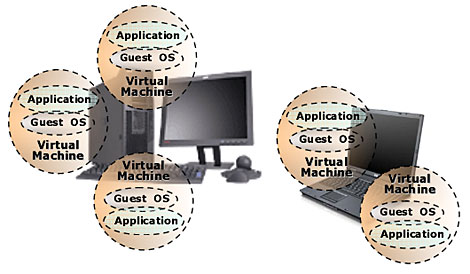Changing memory - confusing clocks...
The memory controller change is the one that is going to directly affect everyone, especially consumers and memory manufacturers, as it will mean that the two major players in the CPU industry are using the same memory platform. This means that any consumer looking to purchase a new processor from either AMD or Intel's product stack will have to purchase DDR2 memory to go with it. As a direct result of AMD's move to DDR2, memory manufacturers will be able to move a lot of the focus towards developing faster, cheaper and lower-latency DDR2 modules, leading to very competitive DDR2 prices.DDR2 memory operates at much higher frequencies than conventional DDR memory modules. Typically, DDR memory operated at 200MHz (400MHz DDR) on Socket 939 systems - the same speed as AMD's internal CPU clock speed. On the other hand, AMD recommends operating DDR2 memory using the DDR2-800 memory divider in the motherboard BIOS - this is double the internal clock speed.
Remember that AMD processors don't have a front side bus, and the memory clock is derrived directly from the CPU clock. As a result of this, DDR2-800 is achieved by dividing the CPU clock by half of the internal clock multiplier. In the case of Athlon 64 FX-62 - which operates at 14.0 x 200MHz, or 2800MHz - the memory runs at CPU/7 in order to attain DDR2-800 speeds. This is all well and good, but problems are apparent when using odd-numbered internal clock multipliers.
AMD's processors cannot derrive a memory clock from a half multiplier (like 6.5x), so it has to resort to the next full multiplier value to calculate the memory frequency. This became apparent when we installed our Athlon 64 X2 5000+ chip into our motherboard. This CPU suffers from lower-than-optimal memory bandwidth as a result of lower-than-specified memory clocks that are a direct relationship to the CPU multiplier used on the chip.
As the chip uses the 13.0x multiplier out of the factory, it derrives its memory clock from the same CPU/7 divider that the Athlon 64 FX-62 uses. Anyone who's able to operate a calculator will realise that 2600/7 does not equal 800MHz. Instead, the memory on the Athlon 64 X2 5000+ runs at 373MHz, or DDR2-742.
The Athlon 64 X2 4800+ and X2 4600+ don't suffer from the same problem as they are both using the 12.0x multiplier, resulting in a memory clock of CPU/6, or 400MHz (DDR2-800). The same is true for Athlon 64 X2 4000+ and X2 3800+, as they both use the 10.0x multiplier. However, the problem will also crop up on both the Athlon 64 X2 4200+ and Athlon 64 X2 4400+ processors.
The memory clock on these two chips will be even lower than the clocks on the X2 5000+, resulting in even less-than-optimal available memory bandwidth. Due to the lower 11.0x multiplier, the memory runs at CPU/6 or 366MHz (DDR2-733). In order to achieve DDR2-800 on AM2 processors with an odd-numbered CPU multiplier, you will either have to overclock the CPU in order to increase the memory bus, or you will be able to lower the multiplier and increase the internal clock frequency to surpass DDR2-800.
More than just DDR2 support:
Aside from the obvious change of memory controller that enables DDR2 support, there are a couple of differences between Socket AM2 and the older Socket 939 processors. The first change is the inclusion of AMD's Pacifica Virtualisation Technology on all Athlon 64 processors; the technology isn't supported by the new Sempron chips, though. Virtualisation Technology enables a single-client computer to act like multiple virtual machines. AMD's solution is similar to Intel's own Virtualisation Technology implementation that the chip giant has included in its chips for a while now, but it is not directly compatible with Intel's solution.
On the whole, Virtualisation technology - in either form - is something that will become more important as time goes by and software developers start to adopt the technology. For now, it doesn't appear to be useful in anything but server environments, but that will change as more software developers jump on board and support it. In the future, it could change the way we use our computers, but for now it's a technology that needs more finesse and a clearer usage model.
Secondly, AMD recently announced its energy efficient processors initiative on May 16th. We mentioned that the chip manufacturer was launching a 35W Athlon 64 X2 3800+, along with 65W versions of all other Athlon 64 X2 processors, except the X2 5000+. The company is also announcing low-power versions of the Athlon 64 3500+ and Sempron 3400+, 3200+ and 3000+.
These are designed for use in environments where space comes at a premium, like in slim and sleek home theatre PCs. They come with a price premium over the standard versions of the processors, but will run at lower voltages. This will probably be a major attraction to overclockers, in the same way that the Mobile Athlon XP processors were when AMD launched 25W and 35W versions of the chips.

MSI MPG Velox 100R Chassis Review
October 14 2021 | 15:04









Want to comment? Please log in.